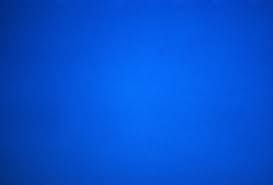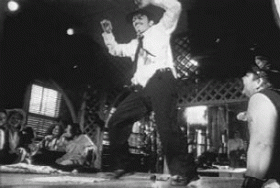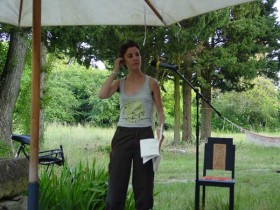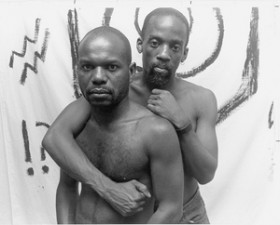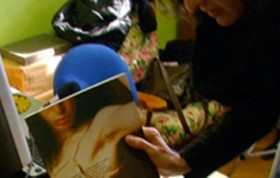Blue is at once Jarman’s most moving film and his most experimental and idiosyncratic. Visually, the film comprises of nothing more than a blue matt screen, over which Nigel Terry, John Quentin, Swinton and Jarman himself read passages from his diaries that poetically trace his struggle with AIDS, his increasing blindness, the loss of friends and loved ones to the disease and his own impending death. Blue actually began as a proposed project about the painter Yves Klein, whose monochrome paintings, often contemplations of pure blue, Jarman greatly admired. (43) However, as Jarman’s health and sight deteriorated, the project began to evolve into something at once far more personal and universal. On one level, he simply lacked both the stamina and the eye-sight to shoot another film in the conventional manner; more importantly though, the format of Blue provided Jarman with a solution to the problems of effectively representing the nature of AIDS on film. As Jarman wrote, “[n]o ninety minutes could deal with the eight years HIV takes to get its host. Hollywood can only sentimentalise it […] the reality would drive the audience out of the cinema and no one viewpoint could mirror the 10,000 lives lost in San Francisco to date”. (44) For Jarman, AIDS was not a subject for entertainment and he thought that to depict the “progress” of AIDS through characters, narrative and even images would immediately cheapen and debase it. Therefore, “Blue‘s rejection of artifice is an aesthetic decision inspired by specific political and ethical criteria”. (45)
If the film is visually simple, the soundtrack however, involving music and a sound design by Simon Fisher Turner as well as the poetic voiceovers, is highly complex. This was a necessity, as in Blue the soundtrack at once has to provide the film’s narrative, its pictures and its emotional core. However, the diary entries read by the cast are both visually evocative and, at times, almost unbearably moving. By taking Jarman’s own experiences of AIDS as its subject, the film manages to be personal and autobiographical but also taps into the consciousness of the viewer, who could not possibly be untouched by this global epidemic. Furthermore, “each spectator’s experience of Blue is wholly unique”. (46) For this reason, Blue “is nothing less than a revolutionary cinematic achievement [which] redefined the notion of what is possible in cinema”, (47) as the intense, flickering blue screen becomes a blank canvas onto which the viewers, prompted by the evocative soundtrack, can impose their own images…
http://sensesofcinema.com/2007/great-directors/jarman/
http://www.evanizer.com/articles/blue/index.html
Derek Jarman, Leading avant-garde British filmmaker whose visually opulent and stylistically adventurous body of work stands in defiant opposition to the established literary and theatrical traditions of his sometimes staid national cinema. With influences ranging from the eccentric writing-directing team Michael Powell and Emeric Pressburger to seminal gay aesthetes Jean Cocteau and Kenneth Anger, Jarman advocated a personal cinema more dedicated to striking imagery and evocative sounds than to the imperatives of narrative and characterization. His comments on one of his strongest films are revealing: The Last of England works with image and sound, a language which is nearer to poetry than prose. It tells its story quite happily in silent images, in contrast to a word-bound cinema.”
Like the noted American underground filmmaker Anger, Jarman displayed a fascination with violence, homoeroticism, gay representation and mythopoeic imagery. Proudly and openly gay, Jarman shared news of his HIV infection with his public and incorporated his subsequent battles with AIDS into his work, particularly in The Garden (1990) and Blue (1993)…
http://www.queerculturalcenter.org/Pages/Jarman/JarmanBio.html
